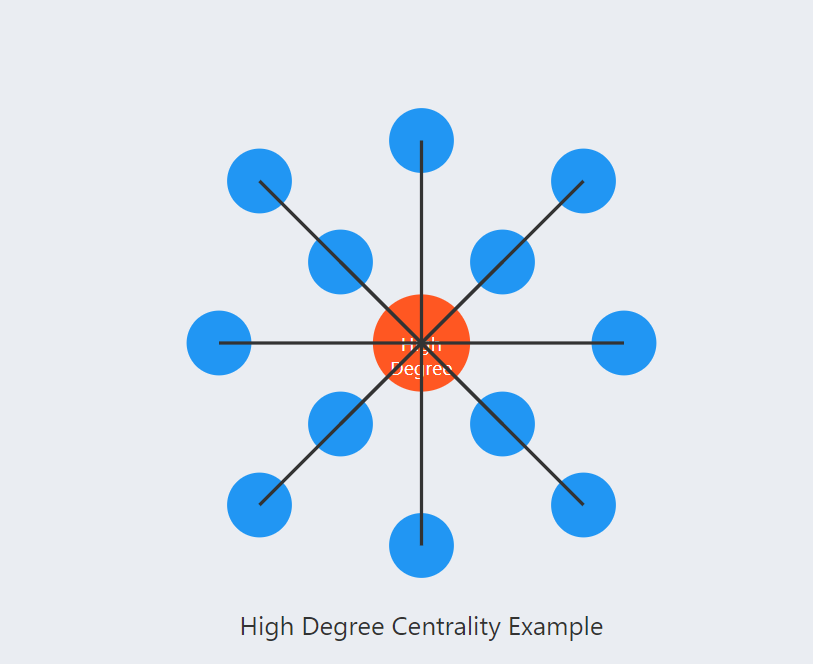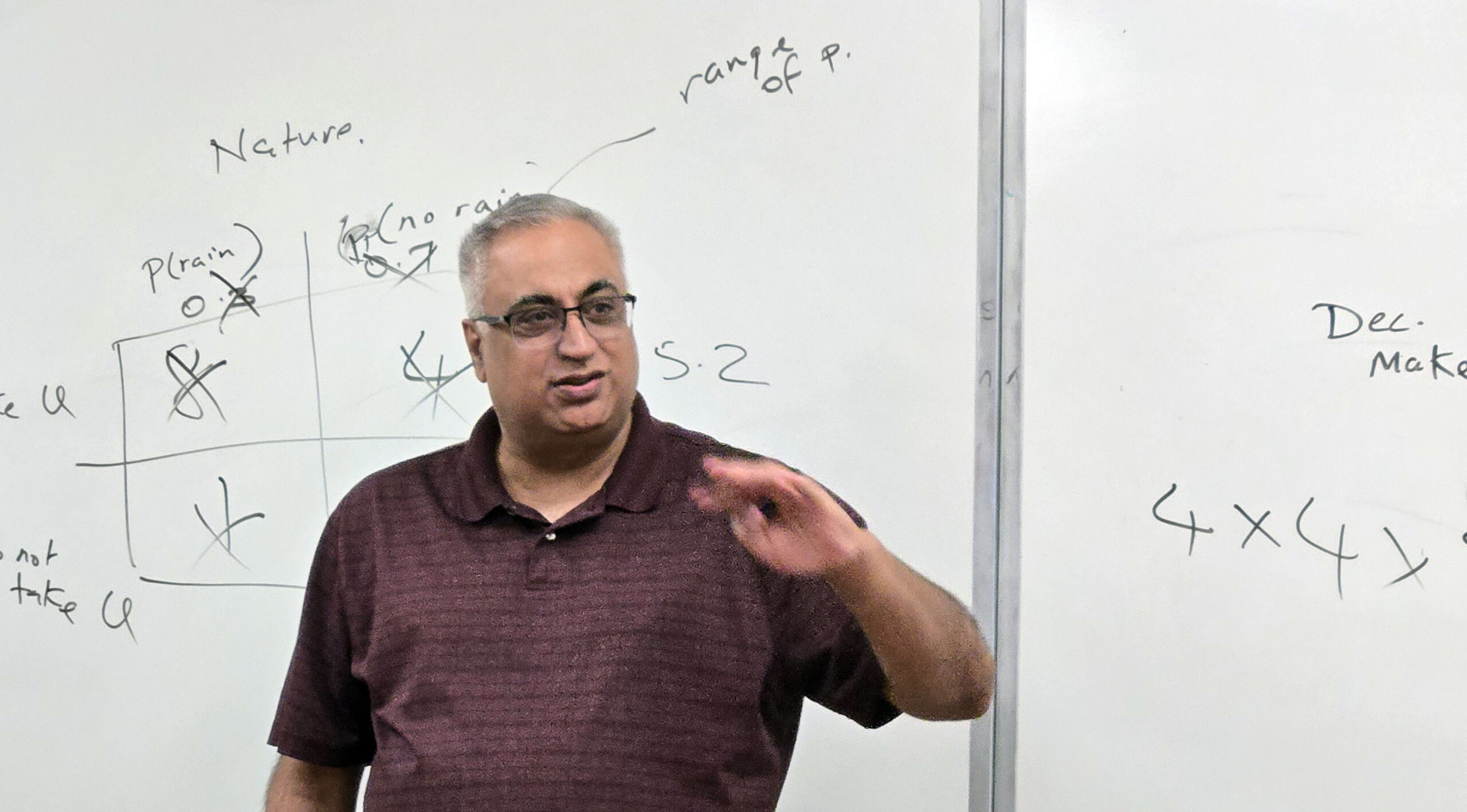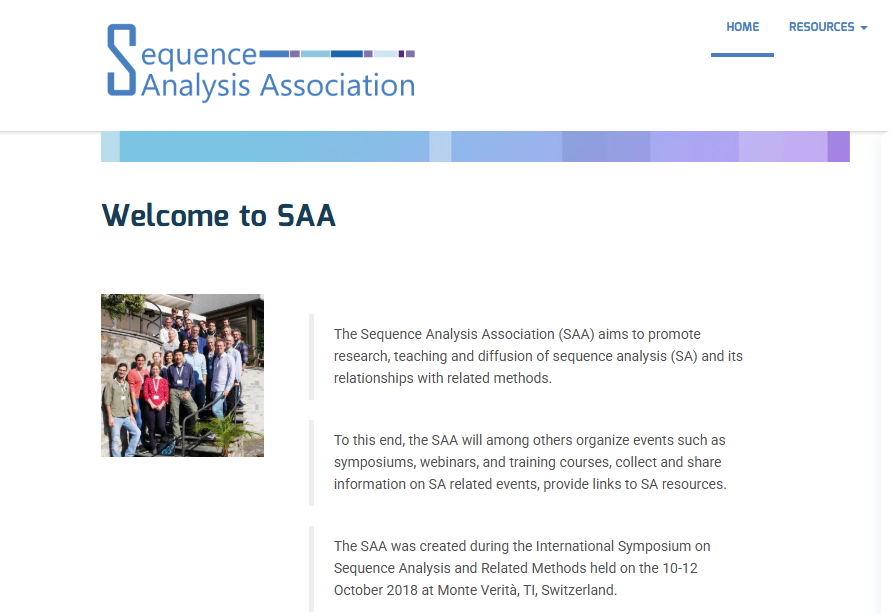- In an undirected network: The degree centrality of a node is simply the number of edges connected to it.
- In a directed network: We distinguish between in-degree (number of incoming edges) and out-degree (number of outgoing edges).
- Mathematical Expression:
- For an undirected graph: C_D(n_i) = d(n_i)
- Where C_D(n_i) is the degree centrality of node i, and d(n_i) is the degree of node i.
- Normalized Degree Centrality:
- To compare across networks of different sizes, degree centrality is often normalized:
- C’_D(n_i) = d(n_i) / (N – 1)
- Where N is the total number of nodes in the network.
- Interpretation:
- High degree centrality: Nodes with many connections are often considered influential or important in the network.
- Low degree centrality: Nodes with few connections may be peripheral or less influential.
- Advantages:
- Simple to calculate and understand
- Provides a quick indication of a node’s importance in terms of direct connections
- Useful for identifying local centers or hubs in a network
- Limitations:
- Doesn’t account for the overall network structure
- Doesn’t consider the importance of the nodes to which a node is connected
- May not be suitable for comparing nodes across different networks
- Applications:
- Identifying key influencers in social networks
- Understanding information flow in communication networks
- Analyzing protein interactions in biological networks
- Studying citation patterns in academic networks
- In the Diagram:
- The central orange node has high degree centrality (connected to all other nodes).
- The blue peripheral nodes have low degree centrality (connected only to the central node).
- Variants:
- Weighted Degree Centrality: Takes into account the strength or weight of connections.
- Eigenvector Centrality: An extension that considers not just the number of connections, but also the centrality of connected nodes.
- Relationship to Other Measures:
- Often used in conjunction with other centrality measures like betweenness and closeness for a more comprehensive network analysis.
Understanding degree centrality is crucial in social network analysis as it provides a fundamental measure of a node’s connectivity and potential influence within the network. However, it’s often most insightful when used in combination with other network metrics and contextual information about the network being studied.

Key Features:
- Central Node:
- The large orange node in the center represents an entity with high degree centrality.
- It is directly connected to all other nodes in the network.
- Peripheral Nodes:
- The smaller blue nodes represent entities with lower degree centrality.
- Each is connected only to the central node.
- Connections:
- All connections in this network involve the central node.
- The central node has 12 connections (edges), while each peripheral node has only 1.
- Degree Centrality:
- The central node has a degree centrality of 12.
- Each peripheral node has a degree centrality of 1.
- In a normalized form, the central node’s degree centrality would be 1 (12 divided by the maximum possible 12 connections), while each peripheral node’s would be 0.0833 (1 divided by 12).
Interpretation:
- Influence: The central node likely has significant influence or importance in this network due to its numerous direct connections.
- Information Flow: Information can quickly spread from the central node to all parts of the network.
- Network Vulnerability: The network heavily depends on the central node. If this node were removed, the network would completely fragment.
- Resource Access: The central node has direct access to resources or information from all other nodes.
Real-World Analogies:
- Social Networks: A very popular person connected to many others who aren’t necessarily connected to each other.
- Organizations: A key manager who directly oversees many departments that don’t interact much with each other.
- Communication Networks: A central hub that all messages pass through before reaching their destinations.
This type of network structure, while demonstrating high degree centrality for the central node, also shows a highly centralized network overall. In many real-world networks, you might see a less extreme distribution of connections, but nodes with notably higher degree centrality often play crucial roles in network function and dynamics.
Degree centrality.
Key Features:
- Node Connections:
- Most nodes (6 out of 8) have only one connection.
- One node has two connections.
- One node has three connections (the highest in this network, but still low).
- Degree Values:
- The numbers inside each node represent its degree (number of connections).
- Degrees range from 1 to 3, which are all considered low in network analysis.
- Network Structure:
- The network is sparse, with few connections between nodes.
- It consists of two pairs and one small chain of four nodes.
Interpretation:
- Low Connectivity: Most nodes in this network have very few connections, exemplifying low degree centrality.
- Limited Direct Influence: Each node has limited direct influence on the network due to few connections.
- Weak Information Flow: Information would spread slowly and inefficiently in this network.
- Network Fragmentation: The network is already fragmented into disconnected components, a characteristic of networks with low overall degree centrality.
- Relative Centrality: Even in this low-connectivity network, the node with 3 connections (bottom center) has the highest degree centrality, showing how centrality is relative to the specific network.
Real-World Analogies:
- Social Networks: Individuals who are very isolated, with few social connections.
- Communication Networks: A system where most devices can only communicate with one or two other devices.
- Transportation: A poorly connected road system where most towns have only one road connecting them to other places.
Implications of Low Degree Centrality:
- Resilience: Networks with uniformly low degree centrality can be vulnerable to disconnection if even a few connections are removed.
- Resource Access: Nodes have limited access to resources or information from other parts of the network.
- Influence: It’s difficult for any single node to have a broad influence on the network.
- Efficiency: Processes that rely on network connections (like information spread) would be slow and limited.
This type of network structure demonstrates low degree centrality across most nodes. In many real-world networks, you might see a mix of low and higher degree centrality nodes, but networks or parts of networks with low degree centrality often indicate areas of weak connectivity or potential for improvement in system design.









Leave a Reply